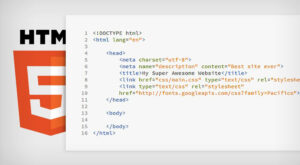
The software development landscape is more complex than ever, and with that complexity comes the inevitable: bugs. As codebases grow and systems become more intricate, the need for effective debugging tools has become paramount. Developers have a variety of tools at their disposal for hunting down and squashing bugs. This article highlights some of the best code bug hunting tools available in 2011 that developers can add to their arsenal.
1. Visual Studio Debugger Integrated directly within the Visual Studio IDE, Microsoft’s debugger is a powerhouse for developers working on Windows platforms. It offers a wide array of features, including breakpoint management, code stepping, and state inspection, making it an essential tool for .NET developers.
2. GDB (GNU Debugger) For developers working in a Linux environment, GDB is the go-to tool. It supports languages like C, C++, and Fortran, and it’s capable of everything from routine debugging tasks to more complex operations like remote debugging and automatic memory leak detection.
3. Firebug Web development is incomplete without Firebug, an extension for the Firefox browser. This tool allows developers to inspect HTML and modify style and layout in real-time, with a powerful JavaScript debugger that includes breakpoints, stack inspection, and an interactive console.
4. Valgrind Valgrind is an instrumentation framework for building dynamic analysis tools. It’s widely used for memory debugging, memory leak detection, and profiling. Although it can slow down the execution of programs, the insights it provides are invaluable, especially for complex C and C++ applications.
5. Fiddler Fiddler is a web debugging proxy that logs all HTTP(S) traffic between your computer and the Internet. It’s an indispensable tool for debugging web applications, allowing you to inspect incoming and outgoing data to pinpoint the source of web-related bugs.
6. JIRA by Atlassian Although JIRA is not a debugging tool per se, it’s a bug tracking system that’s critical in managing bugs. It allows teams to capture and organize bugs, prioritize them, and update them with bug-fixing progress.
7. Eclipse Debugger Eclipse IDE users have a built-in debugger at their disposal that supports various programming languages through plugins. It provides a sophisticated debugging environment with features like conditional breakpoints and the ability to inspect variables and expressions.
8. Xcode Debugger For iOS and Mac developers, the Xcode Debugger is integrated into the Xcode IDE. It offers features like graphical debugging, the ability to watch variables, and an interactive console for executing arbitrary code snippets.
9. Wireshark Wireshark is a network protocol analyzer that lets you capture and interactively browse the traffic running on a computer network. It’s especially useful in tracing bugs related to network applications or services.
Conclusion In 2011, these tools represent the pinnacle of bug hunting in software development. From in-IDE solutions to network analyzers, the right tools not only streamline the debugging process but also enhance the overall quality of the software. While the landscape of development tools is always changing, the value of reliable debugging tools remains constant. Using these tools effectively can mean the difference between a product plagued with issues and a smoothly running application that satisfies users and developers alike.



